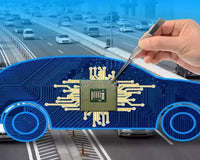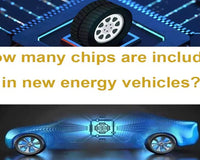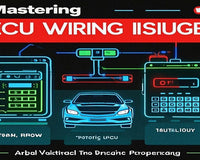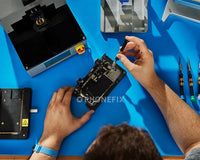
The ECU, or Engine Control Unit, is the core of a car's internal system. It governs various subsystems, referred to as ECU ICs, each with unique functionalities to control, monitor, and, in some cases, manipulate the vehicle's performance. It wouldn't be an exaggeration to label these ICs as the DNA strands determining the car's behavior in response to the driver's commands.
Now, while a car's anatomy across brands and models might differ, there are constants – the ECU IC categories, which act as the universal language of automotive electronics. These ICs are the building blocks of different automotive systems, ensuring that every component synergizes for optimal
The Engine Power IC
At the forefront of vehicular performance enhancement is the Engine Power IC, which is tasked with the responsibility of churning out more horsepower. This is the system that performance enthusiasts turn to when they seek an extra nudge in power output. Engine Power ICs come with intricate configurations and are often reprogrammable, making them the go-to choice for those who crave for a more spirited driving experience without extensive mechanical overhauls.

The Rotational Speed IC
Critical to maintaining engine health and monitoring performance is the Rotational Speed IC. It serves a dual function, counting the revolutions of the engine and serving as a tachometer. This data is vital in regulating fuel injection, ignition timing, and transmission shifts, ensuring that the engine operates within its designed power band efficiently.
The Car Audio IC
In the realm of in-car entertainment, the Car Audio IC reigns supreme. It's integrated into the vehicle's audio system, translating electrical signals into the melodious output that accompanies your drives. This IC is designed to deliver impeccable sound quality and to be resilient to the inherent challenges of the vehicle's operational environment.
The Electrical Relays
Electrical Relays act as the traffic wardens of the automotive electrical system. They are responsible for directing high current to various components, from the ignition to the lights. Their design is resilient, capable of withstanding the rigors of the road, ensuring reliable performance regardless of the stress on the vehicle's electrical system.
ECU Driver IC
The ECU Driver IC is often in the shadow of other more glamorous ICs, yet its role is no less significant. It transmits high speed and high power signals to actuators and sensors within the engine system, converting low-voltage signals from the control unit to the higher voltages needed to power significant control systems in the vehicle.
Diesel Engine IC
Diesel engines have their own set of specialized ICs designed specifically to cater to the unique requirements of compression-ignition powerplants. These ICs control the fuel injection systems, turbochargers, and other parameters that define the diesel engine's operational profile, ensuring that it delivers on fronts of efficiency and torque.
The Dashboard IC
If the dashboard is the face of a car, then the Dashboard IC is the brain behind it, processing and displaying vital information to the driver. It's responsible for everything from the speedometer to the fuel gauge, oil temperature, and more. Often, it's here that the driver interfaces with the vehicle's myriad systems.

Transforming the Drive with Transponder Chips
Transponder Chips are synonymous with vehicle security and anti-theft systems. They work closely with the vehicle's ignition system, transmitting a unique signal that, in the right context, allows the car to start. Without this small but integral ECU IC, modern anti-theft systems wouldn't have the might they wield today, making them indispensable to the vehicle's safety mechanisms.
The Idling Throttle IC
The Idling Throttle IC controls the engine's idling speed, ensuring an ideal stationery performance. When the car comes to a stop, this ECU IC takes charge, adjusting the throttle opening to prevent stalling. In stop-go traffic, its role becomes even more pronounced, managing the engine's idling speed to match the dynamics of traffic flow.
The Car EEPROM IC
The Car EEPROM IC is synonymous with memory and has a significant role in the programmability of ECU systems. It contains the data that determines how an engine operates under different conditions, and it is this data that can be reprogrammed to enhance performance or achieve specific tuning objectives – a favorite among those who deal with ECU chip tuning.
Bosch ECU IC
Bosch, a name synonymous with automotive engineering, stands out with its innovative solutions in ECU IC technology. Their ICs power a range of automotive systems, from the engine to the transmission and beyond, with a focus on fuel economy, performance, and durability, validating their claim as pioneers in the field of automotive electronics.
The list does not end here. The automotive ECU IC space is replete with other specialized ICs, each with its role to play in ensuring the vehicle's optimum operation. From the multitude of sensors to sophisticated control units, every part counts, and to disregard these could be tantamount to neglecting an entire facet of vehicle maintenance.
An in-depth understanding of the automotive ECU ICs not only empowers the automotive repair technicians to ply their trade effectively, but it also fuels the passion of tuning enthusiasts to push the limits of performance.
For more specialized information on individual ECU ICs, their applications, and how they can be leveraged for performance upgrades, visit our website ecufixtool and unlock the full potential of automotive technology.









